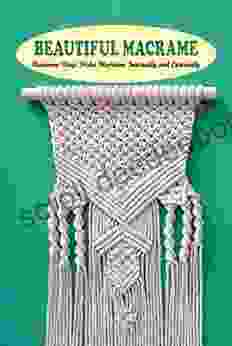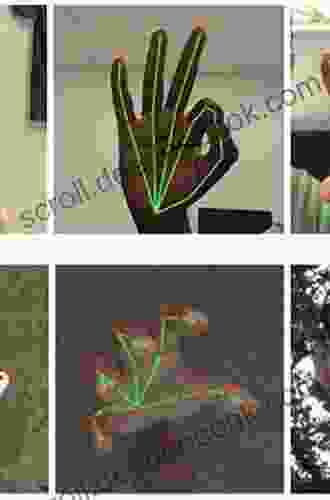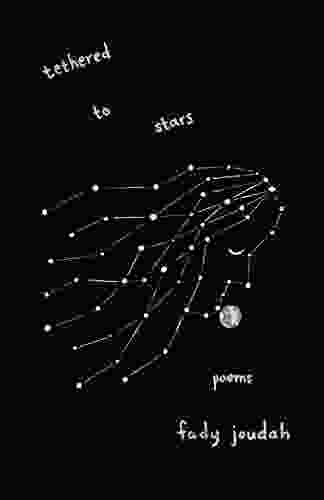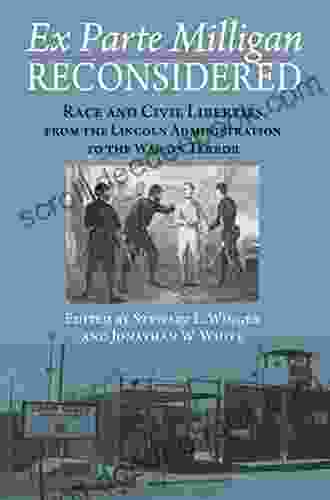Natural Dyeing for Wool Spinners: A Comprehensive Guide

4.2 out of 5
| Language | : | English |
| File size | : | 5484 KB |
| Text-to-Speech | : | Enabled |
| Screen Reader | : | Supported |
| Enhanced typesetting | : | Enabled |
| Print length | : | 42 pages |
Natural dyeing is the process of using natural materials, such as plants, insects, and minerals, to color wool. It is a sustainable and eco-friendly alternative to synthetic dyes, and it can produce beautiful and unique results.
If you're interested in learning how to naturally dye wool, this guide will provide you with everything you need to know.
Choosing the Right Dyes
The first step in natural dyeing is to choose the right dyes. There are many different natural dyes available, each with its own unique color and properties.
Some of the most popular natural dyes for wool include:
- Madder: A root dye that produces a range of colors from pink to red.
- Cochineal: An insect dye that produces a bright red color.
- Indigo: A plant dye that produces a deep blue color.
- Logwood: A tree dye that produces a range of colors from purple to black.
- Weld: A plant dye that produces a yellow color.
When choosing a natural dye, it is important to consider the following factors:
- The color you want to achieve.
- The lightfastness of the dye (how well it resists fading).
- The mordant required (a substance that helps the dye bind to the wool).
Preparing the Wool
Before you can dye the wool, it must be properly prepared. This involves washing the wool to remove any dirt or grease, and then mordanting the wool to help the dye bind to it.
To wash the wool, simply soak it in a lukewarm water and soap solution. Gently agitate the wool to remove any dirt or grease. Rinse the wool thoroughly with clean water until the water runs clear.
To mordant the wool, you will need to use a mordant that is compatible with the dye you are using. Some common mordants include:
- Alum: A mineral mordant that is used with many different dyes.
- Copper sulfate: A metal mordant that is used with dyes that produce blue or green colors.
- Iron sulfate: A metal mordant that is used with dyes that produce brown or black colors.
To mordant the wool, dissolve the mordant in hot water. Add the wool to the mordant solution and simmer for 30 minutes to 1 hour. Remove the wool from the mordant solution and rinse it thoroughly with clean water.
Dyeing Techniques
There are many different dyeing techniques that can be used to dye wool. Some of the most common techniques include:
- Immersion dyeing: This is the simplest dyeing technique. The wool is simply immersed in a dye bath and left to soak for a period of time.
- Exhaust dyeing: This technique is used to achieve deeper colors. The wool is placed in a dye bath and then heated until the dye is exhausted from the bath.
- Overdyeing: This technique is used to create complex colors by dyeing the wool multiple times with different dyes.
- Shibori dyeing: This is a Japanese dyeing technique that uses folding, binding, and dyeing to create patterns on the wool.
The dyeing technique you choose will depend on the type of dye you are using and the results you want to achieve.
Mordanting
Mordanting is a process that helps the dye bind to the wool. Mordants are typically metal salts, and they work by creating a bridge between the dye and the wool fibers.
There are many different mordants available, and the type of mordant you use will depend on the dye you are using and the results you want to achieve.
To mordant the wool, dissolve the mordant in hot water. Add the wool to the mordant solution and simmer for 30 minutes to 1 hour. Remove the wool from the mordant solution and rinse it thoroughly with clean water.
Dyeing
Once the wool has been mordanted, it is ready to be dyed. To dye the wool, simply add the dye to a dye bath and heat the bath until the dye is dissolved.
Add the wool to the dye bath and simmer for 30 minutes to 1 hour. The longer you simmer the wool, the deeper the color will be.
Remove the wool from the dye bath and rinse it thoroughly with clean water.
Finishing
Once the wool has been dyed, it is important to finish it properly. This involves rinsing the wool thoroughly with clean water and then drying it.
To rinse the wool, simply soak it in a bowl of clean water. Gently agitate the wool to remove any excess dye. Rinse the wool thoroughly until the water runs clear.
To dry the wool, simply lay it flat on a towel and allow it to air dry. Do not put the wool in the dryer, as this will damage the fibers.
Natural dyeing is a beautiful and sustainable way to color wool. By following the steps outlined in this guide, you can create beautiful and unique dyed wool that can be used for a variety of projects.
4.2 out of 5
| Language | : | English |
| File size | : | 5484 KB |
| Text-to-Speech | : | Enabled |
| Screen Reader | : | Supported |
| Enhanced typesetting | : | Enabled |
| Print length | : | 42 pages |
Do you want to contribute by writing guest posts on this blog?
Please contact us and send us a resume of previous articles that you have written.
 Page
Page Chapter
Chapter Text
Text Reader
Reader Library
Library E-book
E-book Newspaper
Newspaper Paragraph
Paragraph Sentence
Sentence Glossary
Glossary Bibliography
Bibliography Foreword
Foreword Preface
Preface Annotation
Annotation Footnote
Footnote Manuscript
Manuscript Codex
Codex Bestseller
Bestseller Classics
Classics Narrative
Narrative Biography
Biography Autobiography
Autobiography Memoir
Memoir Reference
Reference Dictionary
Dictionary Character
Character Resolution
Resolution Catalog
Catalog Card Catalog
Card Catalog Borrowing
Borrowing Study
Study Research
Research Lending
Lending Journals
Journals Special Collections
Special Collections Study Group
Study Group Storytelling
Storytelling Awards
Awards Book Club
Book Club Theory
Theory Lisi Harrison
Lisi Harrison Melanie Wonderadi
Melanie Wonderadi Donna P Hope
Donna P Hope Ralph Nader
Ralph Nader Amarra Skye
Amarra Skye Eric M Bailey
Eric M Bailey Dreamland Publications
Dreamland Publications Sanford Berman
Sanford Berman Tim Minchin
Tim Minchin Ashley Hutson
Ashley Hutson Charles Finch
Charles Finch Amber Hendricks
Amber Hendricks Jeannie Davide Rivera
Jeannie Davide Rivera William March
William March Uncle Amon
Uncle Amon Rune Hunt
Rune Hunt Liam Mccann
Liam Mccann Grace Clemens
Grace Clemens Paolo Javier
Paolo Javier Barry Wittenstein
Barry Wittenstein
Light bulbAdvertise smarter! Our strategic ad space ensures maximum exposure. Reserve your spot today!
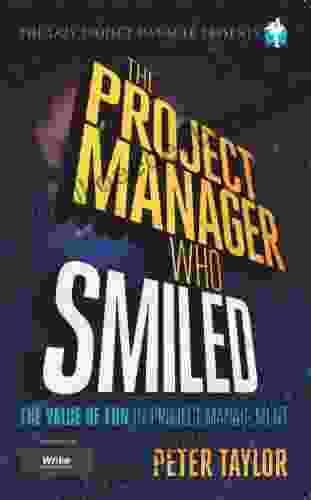
 Terry PratchettThe Project Manager Who Smiled: A Tale of Laziness and Success in Project...
Terry PratchettThe Project Manager Who Smiled: A Tale of Laziness and Success in Project... Manuel ButlerFollow ·16.1k
Manuel ButlerFollow ·16.1k Andrew BellFollow ·4.4k
Andrew BellFollow ·4.4k Aldous HuxleyFollow ·7.2k
Aldous HuxleyFollow ·7.2k Michael SimmonsFollow ·5.9k
Michael SimmonsFollow ·5.9k Jerry WardFollow ·6.4k
Jerry WardFollow ·6.4k Herman MitchellFollow ·4.1k
Herman MitchellFollow ·4.1k Derek BellFollow ·18.1k
Derek BellFollow ·18.1k Isaiah PriceFollow ·16.9k
Isaiah PriceFollow ·16.9k

 Howard Powell
Howard PowellDk Workbooks Science Third Grade: An In-Depth Exploration...
Science education plays a...

 Everett Bell
Everett BellLearn to Play Bluegrass Dobro Guitar: A Comprehensive...
: Bluegrass Dobro, A Story of...

 Jeffrey Cox
Jeffrey CoxHow the Raccoon Got His Mask
The raccoon, with its...
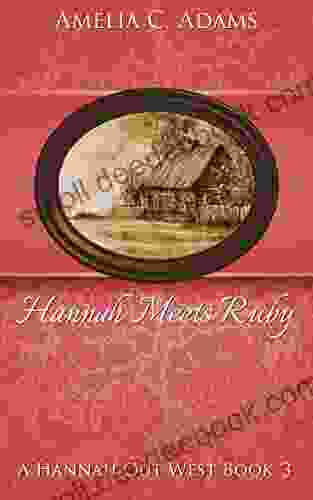
 George Bell
George BellHannah Meets Ruby Hannah Out West: An Adventure-Filled...
Hannah Meets...
4.2 out of 5
| Language | : | English |
| File size | : | 5484 KB |
| Text-to-Speech | : | Enabled |
| Screen Reader | : | Supported |
| Enhanced typesetting | : | Enabled |
| Print length | : | 42 pages |



